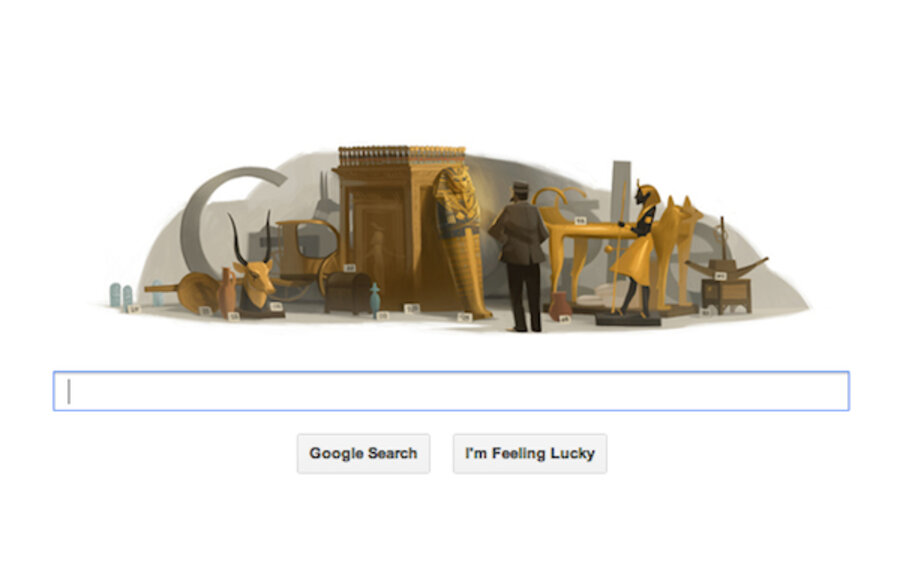Howard Carter, the original Indiana Jones
Loading...
A Google doodle today depicts a besuited gentleman in a stylish hat, gazing at an array of artifacts, including a gilded tomb and a very familiar-looking sarcophagus. So who's the dude in the suit? None other than Howard Carter, the British archaeologist that discovered the final resting place of Tutankhamun, or King Tut.
Carter was born in 1874, the son of a painter. He nursed an early interest in archaeology, and according to his obituary in the Times, he journeyed first to Egypt at the age of 17, as a kind of understudy to Professor Flinders Petrie. Eventually, he became Inspector General of the Antiquities Department for the Egyptian government, and began digging around the Valley of the Kings, west of the Nile River.
There he discovered the tombs of Hatshepsut, Tehuti-mes IV, among other ancient dignitaries. When a dispute forced Carter to leave the service of the Egyptian government, he signed on with George Edward Stanhope Molyneux Herbert, otherwise known as the Earl of Carnarvon. Carnarvon was an amateur Egyptologist, and he accompanied Carter on his digs, providing essential financial support.
In 1922, Carter unearthed the tomb of Tutankhamun, not far from the tomb of Ramesses VI. The tomb was filled with various gilded objects worth billions of dollars. But the real prize was the sarcophagus of Tutankhamun, who was found to be only a teenager at the time of his death. Shortly after the tomb was discovered, a rumor began to spread that the whole place was cursed.
The curse myth was perpetuated by the sudden death of the Earl of Canarvon, who apparently died of an infected mosquito bite.
It's worth noting that Carter never really believed in the superstition. He died many years later in London, and was buried in the Putney Vale Cemetary. On his tombstone, the following words were carved: "May your spirit live, may you spend millions of years, you who love Thebes, sitting with your face to the north wind, your eyes beholding happiness."
For more tech news, follow us on Twitter @venturenaut.







